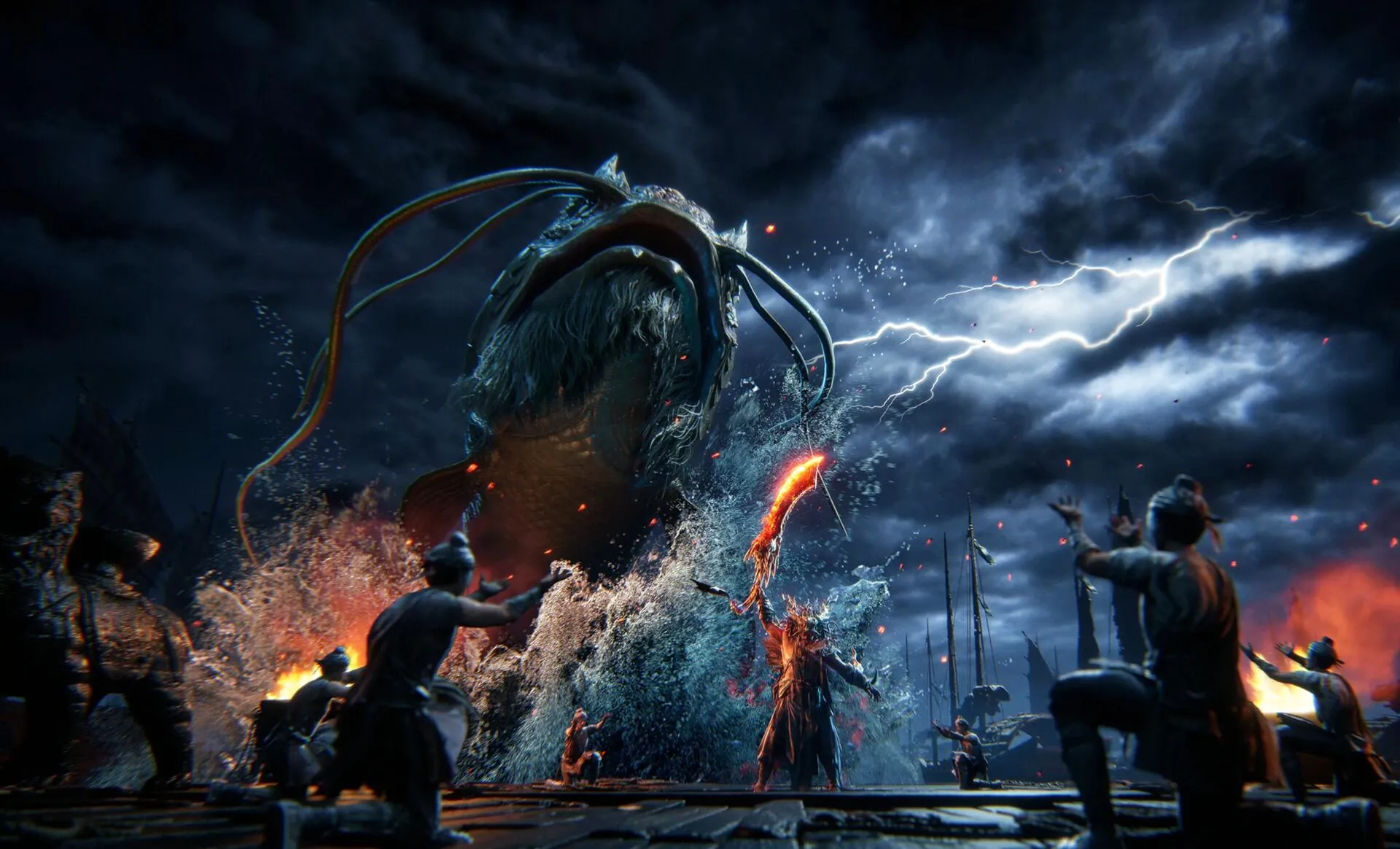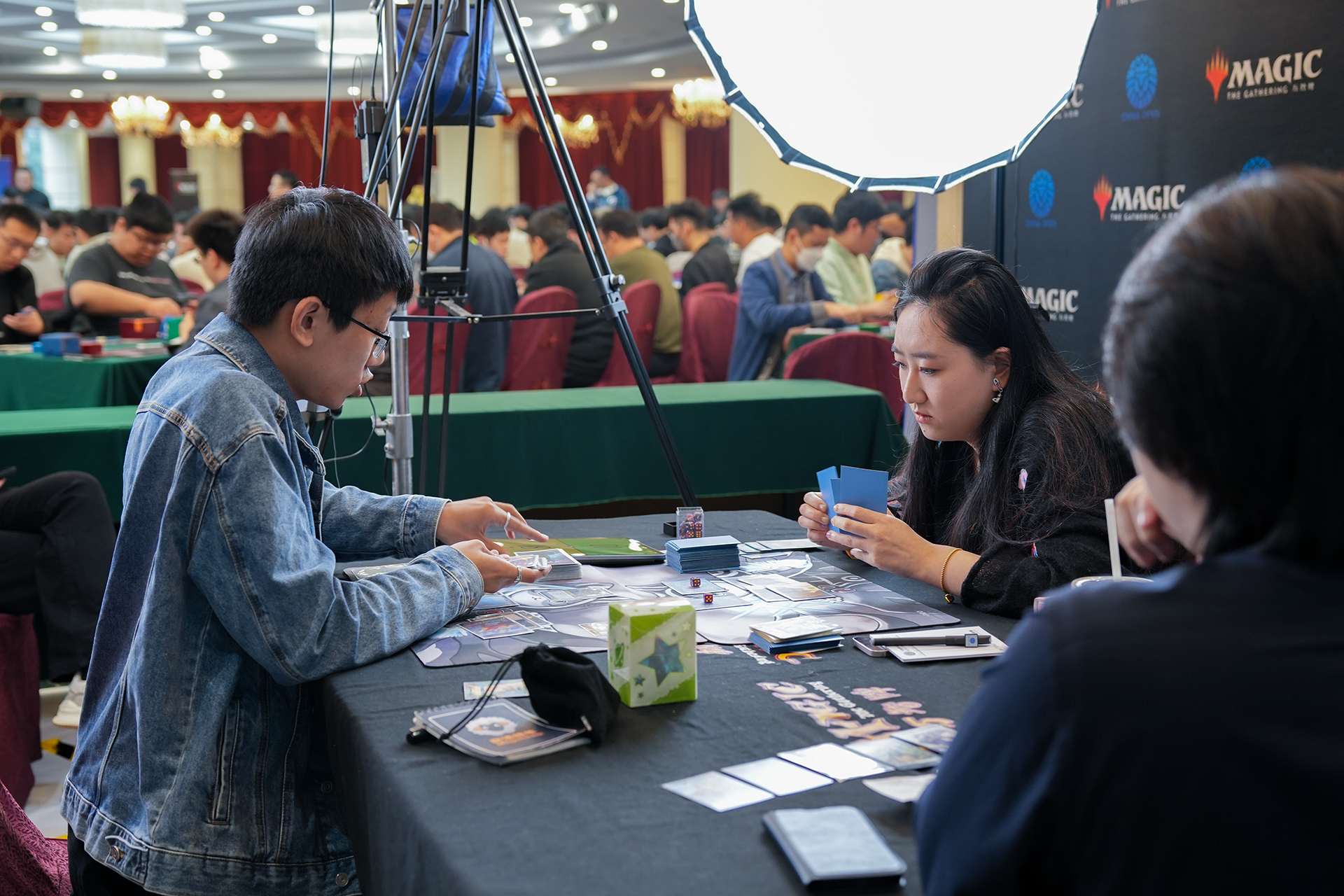Though tech entrepreneur Wang Mengqiu’s credentials are pristine — a Stanford PhD in Machine Learning, early-career stints at Facebook, Twitter, and Alibaba, and a part-time gig with a prestigious Silicon Valley VC firm — his route to success was circuitous. Growing up in a military family in Hangzhou, he says, “I never really cared about science or math or any of that.” Wang — MQ to friends and colleagues — was most interested in sports (“I was semiprofessionally trained in high-jumping and basketball”) and British post-punk bands like Bauhaus and Current 93.
The latter interest compelled him to perform well on his college entrance exam, the gaokao, so that he could make it into a university in Beijing, then the epicenter of China’s burgeoning underground rock scene. Despite acing the gaokao and landing entrance to Beihang University, the country’s foremost institution for the study of aeronautics, Wang dropped out after a semester:
I was disappointed, because I dreamed of college being a place where my spirit would soar and I would be completely free. But once I got here, it was a bunch of guys who spend all their time studying and fighting for a seat in the self-study room. Nobody shared my interest. I realized that wherever I go I’ll be a weirdo, because the kind of stuff that I like, nobody really likes. And that’s part of my nature. So I quit.
The road from there led Wang to New Zealand, where he earned dual undergraduate degrees in Electrical Engineering and Computer Science while working part-time as a dishwasher, and then on to Carnegie Melon for his Master’s. Then came Stanford — he actually dropped out of his AI PhD track for a few years to gain working experience at the three internet giants mentioned above.
Though Wang readily admits the fact that his parents’ financial support allowed him to jump abroad initially, he credits his days washing dishes in Dunedin with instilling in him a work ethic that he feels to be lacking among many entrepreneurs in China’s major tech hubs. Perhaps his willingness to slog through hard times explains his refusal to chase the easy money today.
Wang, now 36, is the chief technical brains behind Zero Zero Robotics, a company with offices in Beijing, Hangzhou, Shenzhen, and Cupertino that he co-founded in May 2014. Zero Zero made its initial splash last year with the release of its Hover Camera Passport, an AI-powered drone that the company bills as “your self-flying personal photographer.” Though on the surface the Hover Camera looks like many other consumer drones — a robust industry in China — its secret sauce is an embedded AI chip allowing it to perform complex facial and body recognition computations in a tiny package.
This embedded AI technology is Zero Zero’s core product, according to Wang, but they also employ offices full of hardware engineers and service personnel, handling every bit of engineering themselves rather than compromising on any aspect of quality. This has led to design challenges — nearly existentially catastrophic ones — but also to a final product unlike anything else on the market. “We didn’t know if we could run all those algorithms on this chip, make the device this small and make it do this and that. Nobody had done it before. When you put all the specs together, it’s not immediately clear, but I think the risk is manageable. There’s a chance.”
 Three Chinese Drones to KnowArticle Oct 11, 2017
Three Chinese Drones to KnowArticle Oct 11, 2017
Wang’s enterprise made headlines in August, when it was rumored that Snapchat’s parent company was in talks to purchase Zero Zero Robotics for $150-$200 million. According to a report by The Information from last month, that deal seems to have fallen through, and Snap’s fortunes in general have taken a recent dip. Wang wouldn’t comment on his company’s dealings with Snap, but Zero Zero is forging on, exploring ways to introduce their futuristic AI drone to a wider consumer audience, and seeking third-party partners with which to expand their embedded AI technology.
Wang himself is moving constantly between Zero Zero’s Beijing engineering headquarters, the company’s software development center in Hangzhou, and its manufacturing base in Shenzhen to oversee each new frontier. His flight tracker app tells him that he’s spent 1,024 hours in planes in 290 trips over the last 2 years — more than 40 full days in the air since founding his company.
I sat down with MQ recently for a long chat about the Hover Camera, his company’s DIY approach to drone construction, and AI in China. (This interview has been edited for brevity; we’ll post a monologue by Wang Mengqiu later in the week with more general insights on tech innovation in China today.)

Radii: How has reception to the Hover Camera been so far? What other products are you working on?
Wang Mengqiu: This is the first generation. It’s not bad, but it’s still pretty far from perfect. The market is very new, we’re kind of educating the market in many ways. The price point is very high, it’s not as robust as we’d like it to be. There’s still a pretty high barrier or learning curve for a novice user. So we’re gonna continue down that path and build better products that can benefit more people. That’s a pretty serious commitment. We are, however, partnering and working with other companies to work together to build embedded-AI-enabled, smart-home-related hardware. But on that front, our role is more as a technology supplier.
In July the Chinese government outlined an official plan to become world leaders in AI by 2030. Does that affect you? Does that trickle down and benefit you as a private company whose core technology is an embeddable AI chip?
It hasn’t, and I suppose it’s a blessing and a curse. The investment circle, and also public opinion in China, are very buzzword-oriented. People are too lazy to gain a full understanding of all the concepts, they just want to be able to quickly categorize or identify things. And the stuff that we do, it’s too obvious to call it a drone.
“Investment circle and public opinion in China are very buzzword-oriented” — Wang Mengqiu
But then you tell them that there’s actually AI in the drone, the drone is just the flying part, which is easy, but making it intelligent so that it can follow you, it can detect its owner, that’s the AI part of it. If you tell them this is a flying robot — it is a robotic device, it’s perceiving the environment and acting on its own, deciding where to position itself, that’s what a robot does. It’s just flying instead of rolling on wheels. And they’re like, “No, that’s not a robot, robots have legs.” This is how people think. And we tell them that, oh yeah, do you know how it recognizes its owner? It’s doing facial recognition, body recognition. When people think about Face++, they go yeah that’s AI. But we’re thought of as a drone company, so we haven’t benefitted as much from AI’s [government boost].
Related:
 AI Builds Up in China, Divides US Tech TitansArticle Jul 27, 2017
AI Builds Up in China, Divides US Tech TitansArticle Jul 27, 2017
You have offices in Beijing, Hangzhou and Shenzhen, and you handle everything from top-level engineering to hardware manufacturing yourselves. Isn’t this an unusual way to do it? Most companies focus on one of these areas and outsource the rest to partners, right?
It’s not like we didn’t try to contract external partners. We had an ODM house to work with us, we were looking for technologies that are directly applicable so we could get to market faster, learn the market reaction, then come back and refine the technology. On the AI side, there was nothing. Nobody has solved the problems that we’re trying to solve. No one has built anything like this, with the constraints that we face. The stuff that runs on big servers, like the things I used to do in my PhD, will not work on a small embedded device. So that’s one part.
And for the hardware, all the ODM and OEM manufacturers — I hate to say this, but they’re best at delivering a mediocre-quality product that kind of works. If you ask them to push the limit, that’s not their business model. They don’t have the talent or ability to do that. We were getting so many no’s. We’d say, “We want it to fit in this size, we want a chip to be this small, we want performance to be this good.” And they were like, “No, can’t do it.” So we ended up having to build our own team, force our own people to take the risks that we take. A lot of times we don’t know if it’s gonna work. But we’re willing to take the risk.
If it’s an external partner, it’s difficult. We changed our designs so many times, it was ridiculous. Even our own people got very uncomfortable, because they have 20 years of experience working at big companies. They were like, “This is suicide.”
When initially conceiving your product, did you decide to make an AI chip and build a product around it, or have an idea for an autonomous drone and design the AI chip around that?
It was the latter. We wanted to build this drone. But in making that decision, it was because we understood the technology that was available. We’re not a success, right? Let’s be honest. We’re so far from being an actual success, we just got started, just took our first step. We’re surviving pretty well, but that’s pretty much it.
But I think part of the challenge of doing this particular startup, as a founder and as the product guy, is that you need to have a pretty deep understanding of the technology to be able to make some calls or judgements that won’t be verified until two years later. We didn’t know this was going to work. We didn’t know if we could run all those algorithms on this chip, make the device this small and make it do this and that. Nobody had done it before.
“You need to have a pretty deep understanding of the technology to be able to make judgements that won’t be verified until two years later”
When we started, Qualcomm hadn’t released the [drone-embeddable] Snapdragon Flight platform, which is their cellphone chip made for drones. Before us, nobody had used a cellphone chip for a drone. Even DJI uses a different approach — they have a dedicated chip for the vision stuff, another dedicated chip for image capturing, and another chip for flight control. Three separate chips doing three separate things. That’s why it’s bigger and bulkier. But we combined it all into one, and that’s why we can make it really small.

Are there any specific products that you want to apply this to in the future outside of drones?
The areas that we’re interested in, through connection with external partnerships, are all consumer-grade hardware. We’re not applying this to industrial grade stuff, we’re not building passenger drones or any of that, yet. Our main interest is computer-oriented hardware that has high usability, high accessibility, and high visibility, and that could benefit from all the AI and the advanced computing that you do. Either making user interaction easier, or making information more accessible.
So in these partnerships, and generally, you’d say your core competency is in AI?
Yeah. I’d say we have two areas of competitive advantage. One is in flying-related stuff. We’re really, really good at designing drones that can fly longer, but better, [with more] flight control. And the second one is embedded AI, or more specifically, embedded vision. We haven’t developed any speech recognition abilities yet, but I think vision has a long way to go. And to get those vision algorithms to run on those localized chips is not easy. It’s not trivial.
Check back in to Radii later this week for a Radii Voices monologue by Wang Mengqiu on innovation in China vs the US, and the relative merits of China’s three big tech cities: Beijing, Hangzhou and Shenzhen.
All images courtesy Zero Zero Robotics
















